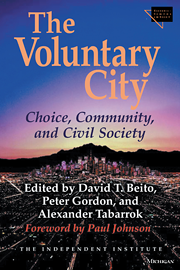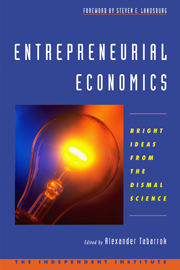Rick Scott, Florida’s governor, created a firestorm recently when he suggested that Florida ought to focus more of its education spending on science, technology, engineering, and mathematics (STEM) and less on liberal arts. Scott got this one right: We should focus higher-education dollars on the fields most likely to benefit everyone, not just the students who earn the degrees. Scott, however, missed another part of the equation: We need to focus more attention on the students who are being left behind, the millions of college and high-school dropouts.
Over the past 25 years, the total number of students in college has increased by about 50 percent. But the number of students graduating with degrees in STEM subjects has remained more or less constant.
Consider computer technology. In 2009 the United States graduated 37,994 students with bachelor’s degrees in computer and information science. That’s not bad, but we graduated more students with computer-science degrees 25 years ago!
The story is the same in other technology fields such as chemical engineering, math, and statistics. Few disciplines have changed as much in recent years as microbiology, but in 2009 we graduated just 2,480 students with bachelor’s degrees in microbiology—about the same number as 25 years ago. Who will solve the problem of antibiotic resistance?
If students aren’t studying science, technology, engineering, and math, what are they studying?
In 2009 the United States graduated 89,140 students in the visual and performing arts, more than in computer science, math, and chemical engineering combined and more than double the number of visual-and-performing-arts graduates in 1985.
There is nothing wrong with the arts, psychology, and journalism, but graduates in these fields have lower wages and are less likely to find work in their fields than graduates in science and math. Moreover, more than half of all humanities graduates end up in jobs that don’t require college degrees, and those graduates don’t get a big income boost from having gone to college.
Most important, graduates in the arts, psychology, and journalism are less likely to create the kinds of innovations that drive economic growth. Economic growth is not the only goal of higher education, but it is one of the main reasons taxpayers subsidize higher education through direct government college support, as well as loans, scholarships, and grants. The potential wage gains for college graduates is reason enough for students to pursue a college education. We add subsidies to the mix, however, because we believe that education has positive spillover benefits for society. One of the biggest of those benefits is the increase in innovation that highly educated workers theoretically bring to the economy.
Thus, an argument can be made for subsidizing students in fields with potentially large spillovers, such as microbiology, chemical engineering, and computer science. But there is little justification for subsidizing sociology, dance, and English majors.
The obsessive focus on a college degree has served neither taxpayers nor students well. Only 35 percent of students starting a four-year degree program will graduate within four years, and less than 60 percent will graduate within six years. Students who haven’t graduated within six years probably never will. The U.S. college dropout rate is about 40 percent, the highest college dropout rate in the industrialized world. That’s a lot of wasted resources. Students with two years of college education may get something for those two years, but it’s less than half of the wage gains from completing a four-year degree. No degree, few skills, and a lot of debt is not an ideal way to begin a career.
College dropouts are telling us that college is not for everyone. Neither is high school. In the 21st century, an astounding 25 percent of American men do not graduate from high school. A big part of the problem is that the United States has paved a single road to knowledge, the road through the classroom. “Sit down, stay quiet, and absorb. Do this for 12 to 16 years,” we tell the students, “and all will be well.” Lots of students, however, crash before they reach the end of the road. Who can blame them? Sit-down learning is not for everyone, perhaps not even for most people. There are many roads to an education.
Consider those offered in Europe. In Germany, 97 percent of students graduate from high school, but only a third of these students go on to college. In the United States, we graduate fewer students from high school, but nearly two-thirds of those we graduate go to college. So are German students poorly educated? Not at all.
Instead of college, German students enter training and apprenticeship programs—many of which begin during high school. By the time they finish, they have had a far better practical education than most American students—equivalent to an American technical degree—and, as a result, they have an easier time entering the work force. Similarly, in Austria, Denmark, Finland, the Netherlands, Norway, and Switzerland, between 40 to 70 percent of students opt for an educational program that combines classroom and workplace learning.
In the United States, “vocational” programs are often thought of as programs for at-risk students, but that’s because they are taught in high schools with little connection to real workplaces. European programs are typically rigorous because the training is paid for by employers who consider apprentices an important part of their current and future work force. Apprentices are therefore given high-skill technical training that combines theory with practice—and the students are paid! Moreover, instead of isolating teenagers in their own counterculture, apprentice programs introduce teenagers to the adult world and the skills, attitudes, and practices that make for a successful career.
Elites frown upon apprenticeship programs because they think college is the way to create a “well-rounded citizenry.” So take a look at the students in Finland, Sweden, or Germany. Are they not “well rounded”? The argument that college creates a well-rounded citizen can be sustained only by defining well rounded in a narrow way. Is someone who can quote from the school of Zen well rounded? Only if they can also maintain a motorcycle. Well-roundedness comes not from sitting in a classroom but from experiencing the larger world.
The focus on college education has distracted government and students from apprenticeship opportunities. Why should a major in English literature be subsidized with room and board on a beautiful campus with Olympic-size swimming pools and state-of-the-art athletic facilities when apprentices in nursing, electrical work, and new high-tech fields like mechatronics are typically unsubsidized (or less subsidized)? College students even get discounts at the movie theater; when was the last time you saw a discount for an electrical apprentice?
Our obsessive focus on college schooling has blinded us to basic truths. College is a place, not a magic formula. It matters what subjects students study, and subsidies should focus on the subjects that matter the most—not to the students but to everyone else. The high-school and college dropouts are also telling us something important: We need to provide opportunities for all types of learners, not just classroom learners. Going to college is neither necessary nor sufficient to be well educated. Apprentices in Europe are well educated but not college schooled. We need to open more roads to education so that more students can reach their desired destination.












